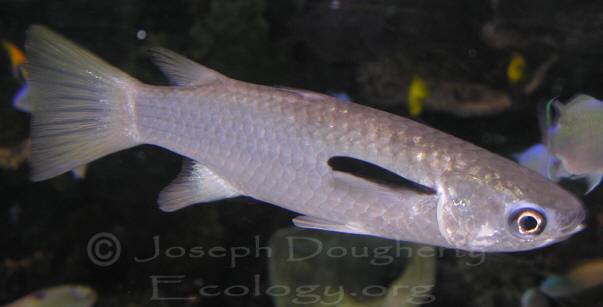Interactions
As far as the Liza vaigiensis letting another species live inside it or offering protection to another species, the Liza vaigiensis tends to mind its own business when it comes to relationships. The fish can grow up to over two feet so it is not like it will clean out another fish’s living area while they offer it protection. But the Liza vaigiensis is a detritivore which means a lot of its diet consists of feces (Wijeyaratne and Costa, 1990). Because of this, the Liza vaigiensis indirectly has a mutualistic relationship with all other non detritivores that live in the same habitat as its self. This is because all species produce waste, and too much waste to non detritivores can become toxic to its body. Non-detritivores can produce waste and not worry about it being toxic to the body, providing the Liza vaigiensis with a source of food. Since there is usually a great supply of waste and other foods that detritivores consume for energy, there is not much competitiveness for food with the Liza vaigiensis.
Figure 6.1 Photograph of schooled Liza vaigiensis
Copywright: Joseph Doughtery. Courtesy:
Calphotos
The Liza vaigiensis also has another indirect commensalistic relationship with many other fish. Elemental Polonium-210 is a radioactive element. If too much of this element is consumed by a fish, it can cause defective mutations that can be fatal. Since the Liza vaigiensis is a detritivore, it will feed on debris. Polonium-210 is mostly found in debris so the Liza vaigiensis seems to have built up a tolerance to Polonium-210. In a study, the Liza vaigiensis had 92.10±45.40 Bq/kg (Hammeed et.al). With the Liza vaigiensis consuming an excess Polonium-210, this will allow the water to be less intoxicated with a harmful radioactive element.
Discover additional Interesting Facts

